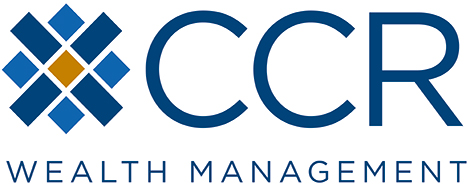Tax Strategies For Retirement Account Withdrawals
If you're like most retirees, running out of money is likely one of your biggest fears for your golden years. The good news is that careful planning and tax-efficient drawdown strategies can help you enjoy the lifestyle you've dreamed of while minimizing the impact of taxes on your retirement income.
Chances are that your retirement accounts include a 401(k) or IRA. Retirement accounts come with plenty of benefits, such as tax deductions, and a generally high return on investment. But they can also come with complicated rules that might make it tricky to get your money (without incurring heavy taxes). Here are some helpful, tax-efficient retirement account withdrawal strategies for you to consider.
Avoid the Early Withdrawal Penalty
Taxes are an unfortunate reality for any traditional 401(k) withdrawals. However, there are some ways you can potentially reduce the amount that you owe. One of the simplest options is to avoid withdrawing money before the age of 59½. Early withdrawals are subject to a 10% penalty in addition to the typical income tax on the withdrawn amount.
Roll Over Your 401(k) Without Tax Withholding
If you change jobs before the age of 59½ and withdraw money from your 401(k), you'll need to withhold 20% for taxes. You then have 60 days to put the entire amount withdrawn, including the 20% you withheld, into a new retirement account to avoid paying an early withdrawal penalty and income tax.
However, it's possible to avoid the tax withholding and potential penalties with a trustee-to-trustee transfer. That means transferring money from your 401(k) to the trustee of another 401(k) or IRA.
Remember Required Minimum Distributions
To avoid a tax penalty, you need to begin withdrawing Required Minimum Distributions (RMDs) from your IRA and retirement plan accounts annually, starting at age 73. If you miss a withdrawal, you may owe 25% of the amount that was supposed to be withdrawn. However, quickly correcting this mistake can reduce the penalty to 10%.
Avoid Two Distributions in the Same Year
Taking two distributions in one year may push you into a higher tax bracket and can produce more taxable income. If you're 73 and retired, you can wait until April 1 of the calendar year after you've turned 73 to take the first distribution. Then, distributions must be taken annually by December 31.
If you’re tempted to delay taking your first distribution because you think you might be in a lower tax bracket when you retire, remember to take into account that you’ll have to take two distributions in one year, which can create a greater tax burden.
Take Withdrawals Before They're Mandatory
You can minimize tax payments on your 401(k) withdrawals by taking them before the mandatory date. Instead of waiting until you turn 73, you can start taking smaller withdrawals in your 60s. Taking this step can keep you in a lower tax bracket and reduce your lifetime tax payments while dispersing your tax burden over the years.
Donate Your IRA Distribution to Charity
Do you want to continue giving to your favorite charities without taking a financial hit once you retire? Not only can you continue your philanthropic endeavors after you retire, but you can also potentially reduce your taxable income by donating IRA distributions to charity.
If you're at least age 70½, you can contribute up to $100,000 ($200,000 for couples) directly from your IRA to a charity to avoid paying income taxes on that distribution. All qualified charitable donations must be made from your IRA. An alternative is to donate part of your RMDs and withdraw the remaining amount as income.
Consider a Roth Account
Parking some of your savings into an after-tax Roth account may help set you up for tax-free investment growth and withdrawals during retirement. Any contributions made to your Roth IRA or Roth 401(k) cannot be deducted from your taxable income for that year, but you won't owe income tax on any capital gains. You can begin making tax-free withdrawals when you're at least age 59½ and your account is at least five years old. Early withdrawals for certain qualifying expenses are exempt from penalties.
Keep Tax-Preferred Investments Outside of Retirement Accounts
An effective strategy to minimize taxes is through tax-efficient investing. That means leaving investments that yield long-term capital gains outside of your retirement accounts. If these investments are parked in a retirement account, you may pay a higher regular income tax rate for any withdrawals. You may also consider holding more highly taxed investments in your retirement account to reduce your tax bill. Some examples include corporate and government bonds and any funds that yield short-term capital gains.
Use Your Funds in the Right Order
Strategic retirement planning includes knowing how and when you'll access income from various sources. There are several factors to consider, including your age, lifestyle goals, the income sources you have and the types of assets you hold.
To help maximize tour lifetime income, consider withdrawing from your taxable accounts first. That's because they'll be taxed as long-term capital gains rather than income (meaning they’re typically often taxed at a much lower rate than regular income).
Next, you might start withdrawing funds from tax-deferred accounts such as a traditional IRA or 401(k). Withdrawing from these accounts after your other taxable accounts can help any tax-deferred assets grow more over time.
Consider withdrawing from your Roth IRA last, since it doesn't have RMD requirements. It's also a great way to let your money grow for as long as possible and you won’t owe taxes on gains from your investments.
Schedule a meeting with your CCR financial professional to discuss how you can implement helpful strategies like these, so you can enjoy more of your hard-earned money in retirement.
Follow us on social media for more timely content delivered directly to your news feed!
